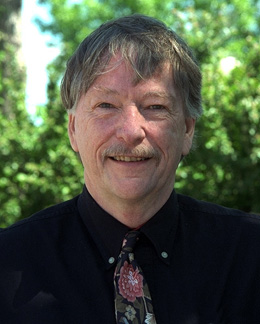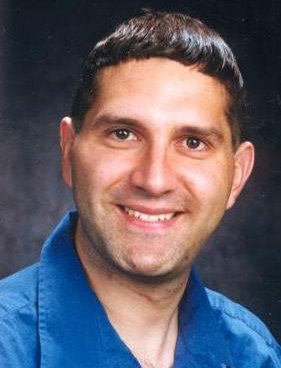Announcement Ceremony for BIRS
September 24, 2001
The Banff Centre, Banff, Alberta
The National Science Foundation, Washington, D.C.
This ceremony includes speeches by: Dr. Rita Colwell (Director, NSF), Dr. Tom Brzustowski (President, NSERC), Dr. Robert Church (Chair of Board, Alberta Science and Research Agency), Dr. Philippe Tondeur, Director of Division for the Mathematical Sciences, NSF), Hon. Cindy Ady (MLA for Calgary Shaw), Ms. Mary Hofstetter (President and CEO of The Banff Centre) and Mr. Raul E. Chavera (US Consul General in Calgary). The MC in Banff was Dr. Nassif Ghoussoub (Director, PIMS) and the MC in Washington was Dr. David Eisenbud (Director, MSRI).
Programme
All times are Mountain Daylight Savings Time (local time in Banff). Local time in Washington, D.C. is two hours later.
| 10:00-11:30am | Mini-symposium: Close Parallels: Good Neighbors and Mathematical
Partners — TransCanada Pipelines Pavilion, room 201 (Chair: Robert
Moody, U. Alberta)
| ||||||
| 11:30-12:45am | Lunch hosted by Mary Hofstetter, President and CEO of The Banff Centre— TransCanada Pipelines Pavilion Foyer | ||||||
| 1:00-2:00pm | Official announcement (joint with NSF and linked with Washington, DC.
Webcast to the entire community) — Margaret Greenham Theatre
M.C. in Banff: Nassif Ghoussoub, Director, PIMS M.C. in Washington: David Eisenbud, Director, MSRI
The list of speakers include: |
||||||
| 2:00pm | Press conference and Reception hosted by The Banff Centre — West lobby of the Eric Harvie Theatre. |
Abstracts
Jim Zidek (Statistics, University of British Columbia):
Does Air Pollution Cause Ill-Health?
Statistical studies have consistently shown air pollution to be associated with morbidity and mortality. A causal association seems now to be widely assumed. However, there are obstacles on the road between association and causation and even uncertainty about the latter might mean in operational terms for decision- and policy-makers. In this talk I will describe those obstacles and work I have done with my co-investigators to get around some of them.

Jim Zidek obtained his PhD from Stanford and joined UBC's faculty after he graduated. His research interests focussed initially on decision analysis. However, in the mid 1980's they expanded to include environmental statistics. His work and that of his co-investigators concerned acidic precipitation in the first instance. That gave way in the 90's to air pollution and its effect on health. With respect to random space-time fields, his work has included the development of methods for spatial design and prediction.
He has been elected to Fellowship in the American Statistical Association, the Institute of Mathematical Statistics and the International Statistical Institute. He has won UBC Killam Fellowships twice and last year won the Gold Medal of the Statistical Society of Canada along with a Distinguished Achievement Award from the Environmental Statistics Section of the American Statistical Association.
He has been elected to Fellowship in the American Statistical Association, the Institute of Mathematical Statistics and the International Statistical Institute. He has won UBC Killam Fellowships twice and last year won the Gold Medal of the Statistical Society of Canada along with a Distinguished Achievement Award from the Environmental Statistics Section of the American Statistical Association.
Richard Cleve (Computer Science, University Calgary):
Quantum Information Processing
In recent years, the idea of using quantum mechanical effects for information processing purposes has received considerable attention. A number of remarkable discoveries have contributed to this interest, including information theoretically secure protocols for cryptographic key distribution and a polynomial-time algorithm for factoring integers on a hypothetical "quantum computer". Although current technology is far from anything resembling a scalable quantum computer, results about quantum error-correcting codes and "fault-tolerant" computation suggest that problems such as errors and decoherence may not be fundamental impediments.
In this talk, I will give an overview of the development of the theory of quantum information and computation. In addition to the above, I will discuss John Bell's results from the 1960s about "non-local" behavior, which include a simple input/output task that is impossible to accomplish with classical information but can be carried out using quantum entanglement. Recent results about communication costs in distributed computations can be viewed as extensions of this early work.

Richard Cleve received his PhD from the University of Toronto in 1989, specializing in computational complexity theory and cryptography. He was a postdoctoral fellow at Berkeley's International Computer Science Institute from 1988 to 1990, after which he joined the computer science faculty at the University of Calgary. His interest in quantum information processing was sparked by Peter Shor's 1994 discovery of an efficient quantum algorithm for factoring integers. He has made various contributions to quantum algorithms, quantum communication complexity and quantum information theory.
Torsten Moeller (Computer Science, Simon Fraser University):
Volume Graphics Challenges
Volume Graphics is part of Computer Graphics whose main subject of study are points and objects made of points. This seeming lack of expression turns out to be very powerful in describing many natural and complex phenomena from weather patterns to fuel cells to our human body. Besides the creation of 2D images of the complex objects the goal of Volume Graphics or Scientific Visualization at large is the creation of tools that enhance the understanding of the objects under investigation. This typically requires the user to interact with the object in real time by extracting only the features of interest, creating images that are accurate and reliable. This talk will give an overview of the field of Volume Graphics as well as some of the challenges facing us today.

Torsten Moeller is an assistant professor at the School of Computing Science at Simon Fraser University. His research interests include the fields of Scientific Visualization and Computer Graphics. He is especially interested in interactive and accurate volume rendering methods for regular and irregular data. He is co-director of the Graphics, Usability and Visualization Lab. He received his PhD in Computer and Information Science from Ohio State University in June 1999.
Getting to The Banff Centre
The Banff Centre is located at 107 Tunnel Mountain Drive Banff, Alberta. The telephone number for the main switchboard is 403-762-6100. A map of the centre is available here.
For those guests staying overnight at The Banff Centre, our checkin desk is located in our Professional Development Centre. Parking is complimentary and our Front Desk staff will instruct you further at checkin. Checkin time is 4:00pm and checkout time is extended until 4:00pm on September 24.
For those guests coming up for the day, the Mini symposium will be held in our TransCanada Pipelines Pavilion. Once arriving at The Banff Centre, follow the signs to our parking areas. Parking is also complimentary for our day guests.





